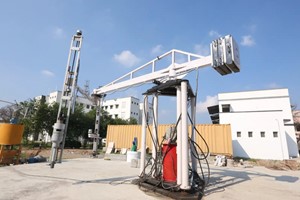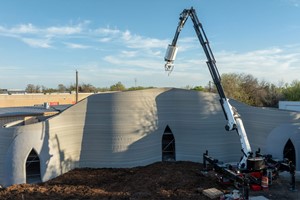The real estate and construction industries are undergoing a digital transformation, driven by the need to optimize physical assets and streamline processes. While many business sectors can transition online with relative ease, creating a digital representation of a physical building presents a unique challenge.
Digital twins, detailed digital models of physical structures, offer a solution. These models serve a multitude of purposes, including construction planning, facilities management, and performance modeling. However, the creation of an accurate digital twin necessitates a complex and technical scanning process.
Challenges and Solutions in Building Scanning
Architects typically initiate digital twin creation using 3D visualization tools like Revit and SketchUp. These tools convert two-dimensional plans into 3D renderings, providing a foundational model. However, discrepancies often arise between these renderings and the final, constructed building due to modifications made during construction.
To address this discrepancy and capture a building's post-construction state, various scanning methods are employed. Mobile phone-based scanning, offered by companies like Matterport, is a viable option for smaller spaces and less critical applications. This method utilizes photogrammetry, a technique that analyzes changes in pixel data from multiple images to infer object distances. However, photogrammetry's accuracy diminishes with increasing camera distance from the scanned area.
For developers constructing large-scale projects, precision is paramount. They rely on comparing real-world scans with architectural models to identify potential construction issues. Inaccuracy can lead to significant cost overruns.
Another limitation of camera-based scanners is their struggle with partially constructed buildings. LiDAR (Light Detection and Ranging) technology offers a more precise alternative. LiDAR scanners use pulsed lasers to measure distances with millimeter-level accuracy. However, professional-grade LiDAR scanners are expensive, ranging from $6,000 to over $100,000. While Matterport scanners offer an accuracy of approximately 1%, high-end LiDAR scanners achieve sub-millimeter precision.
For most contractors and building owners, purchasing such equipment is impractical. Specialized service providers handle the scanning, factoring the equipment cost into their service fees.
The Long-Term Value of Digital Twins
Despite the upfront investment, the long-term benefits of digital twins justify the cost. Savvy building owners who secure a digital scan before construction completion gain a permanent record of the precise locations of pipes, wires, and ductwork concealed within walls. This information proves invaluable for future maintenance and renovation projects.
Digital scans are increasingly used for existing buildings as well. They enable owners and managers to monitor structural changes over time, such as foundation settlement or crack development. Additionally, digital twins facilitate the creation of 3D walkthroughs for marketing purposes and serve as comprehensive repositories of building information.
Conclusion: The Future of Real Estate is Digital
The real estate industry, traditionally rooted in the physical world, cannot ignore the necessity for digital transformation. This transition requires investment in 3D rendering tools, scanning technologies, and skilled data analysis. However, these investments pave the way for significant returns. The potential applications of digital twins are constantly expanding, and integration with artificial intelligence promises to further enhance their utility. As digital twins become an industry standard, companies that fail to adapt may struggle to compete in the future.
By Franco Faraudo













